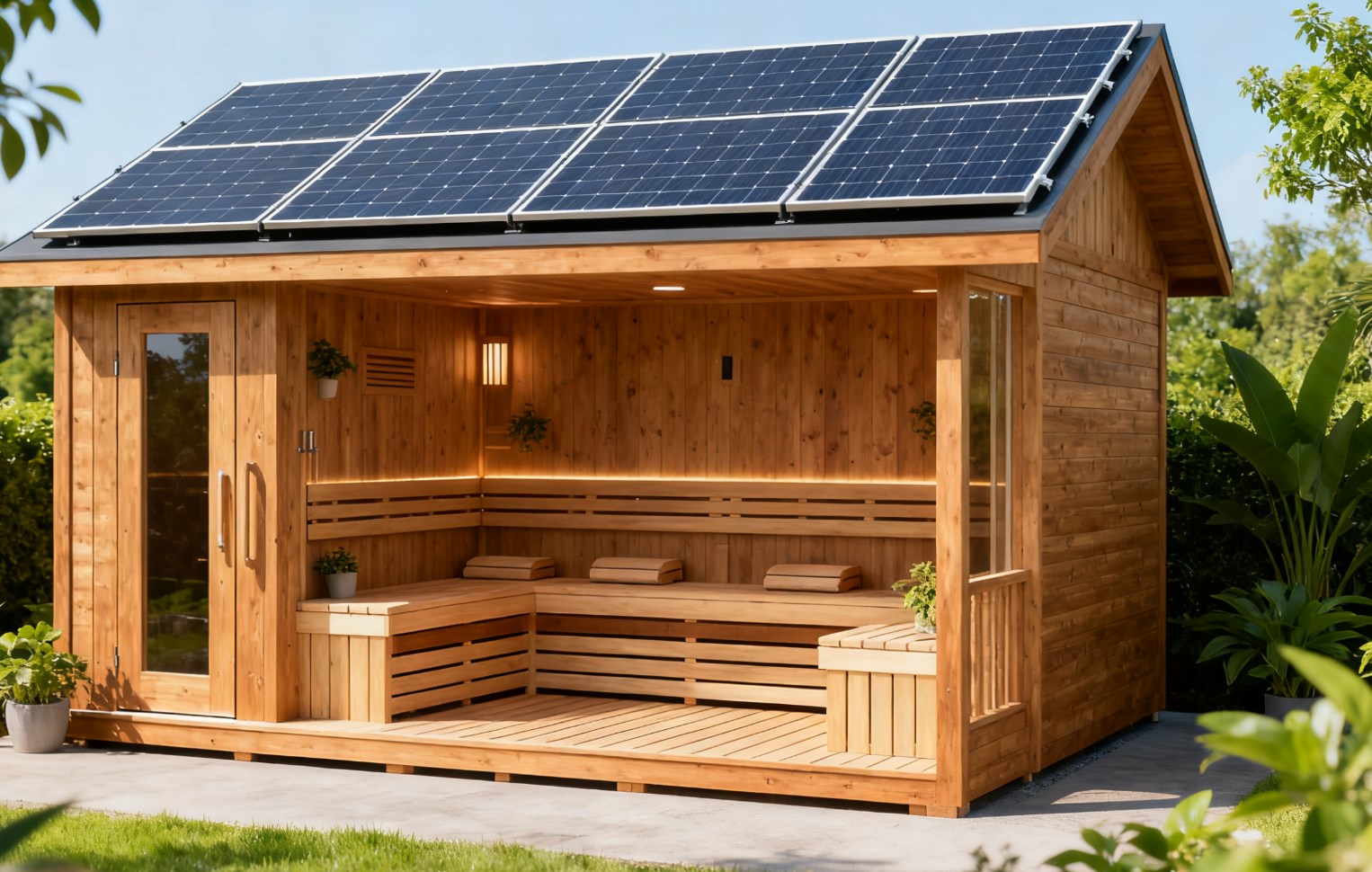With the global rise in awareness of low-carbon environmental protection, traditional high-energy-consuming saunas are gradually transitioning to clean energy. Solar-powered saunas, leveraging the core advantages of "zero-carbon energy consumption and resource recycling", have become an innovative application model in the environmental protection field. Their value is mainly reflected in the following four aspects:

1. Clean Electricity Replacement, Reducing Dependence on Fossil Energy
Solar-powered saunas convert solar energy directly into electricity through photovoltaic modules installed on the roof or nearby, supplying power to core equipment such as far-infrared heating panels and temperature control systems, achieving "zero emissions" from the source of energy. Compared with traditional electric-heated saunas (which rely on thermal power, with each kWh of electricity corresponding to approximately 0.785kg of carbon dioxide emissions) or biomass-fueled saunas (which produce particulate matter and carbon emissions during combustion), solar-powered versions can achieve more than 90% energy self-sufficiency. Especially in areas with sufficient sunlight, they can even operate with "zero purchased electricity" in summer, significantly reducing dependence on fossil energy and contributing to the green transformation of the energy structure.
2. Significantly Reduced Carbon Footprint, Aiding "Dual Carbon Goals"
From a full-life-cycle perspective, the carbon footprint of solar-powered saunas is much lower than that of traditional types. Although the production of photovoltaic modules involves initial carbon emissions, "carbon offset" can usually be achieved through clean energy generation within 2-3 years of use. Additionally, the main structure of the sauna uses environmentally friendly materials such as anti-corrosion wood and XPS extruded boards, further reducing the environmental impact in the building material link. It is estimated that a 2-3 person solar-powered sauna can reduce carbon emissions by approximately 1.2-1.8 tons annually, equivalent to the carbon sequestration capacity of planting 60-90 adult trees, which has important demonstration significance for the low-carbonization of the construction field.
3. Gradient Energy Utilization, Improving Resource Efficiency
Solar-powered saunas can be combined with energy storage systems (such as lithium batteries) to achieve "peak-shifting utilization" of energy: surplus electricity is stored during the day for use at night or on cloudy days, avoiding energy waste. Some high-end models can also achieve "heat recovery", guiding the excess heat generated during the sauna's operation to scenarios such as courtyard lighting and small-scale water feature circulation, forming a closed-loop system of "power generation - energy use - waste heat reuse". This gradient utilization mode increases the comprehensive utilization efficiency of solar energy to more than 85%, far exceeding the energy conversion rate of traditional single energy-consuming equipment.
4. Promoting Integration with Green Buildings, Expanding Environmental Protection Scenarios
In the design of outdoor leisure spaces, solar-powered saunas can be deeply integrated with green building concepts: the integrated design of photovoltaic roofs and building exteriors not only meets power generation needs but also does not damage the landscape; the supporting rainwater collection system can use rainwater for sauna stone humidification, reducing tap water consumption; photovoltaic trees and carbon-sequestering plants are planted around to form a composite space of "energy production + ecological beautification". Currently, this model has been widely applied in scenarios such as campsites, ecological resorts, and private courtyards, becoming a concrete carrier of the "low-carbon lifestyle".
In the future, with the decline in photovoltaic technology costs and the improvement of energy storage efficiency, solar-powered saunas will also upgrade to "intelligent energy management", realizing flexible interaction with the power grid through the Internet of Things, further releasing their application potential in the environmental protection field and providing a new path for the development of sustainable buildings and leisure facilities.






